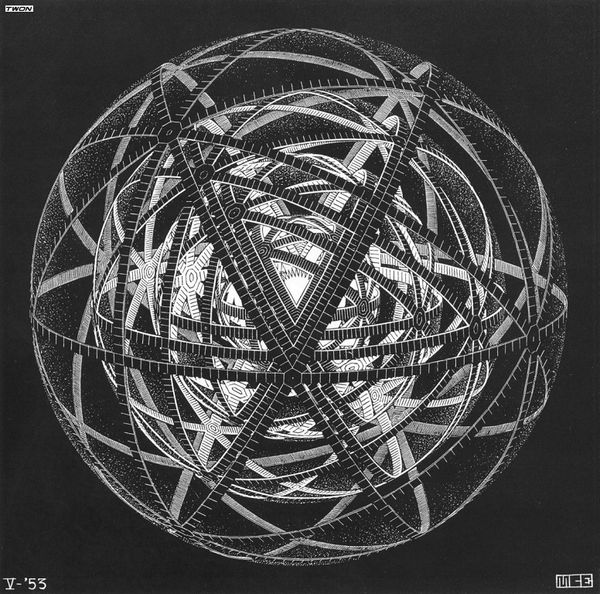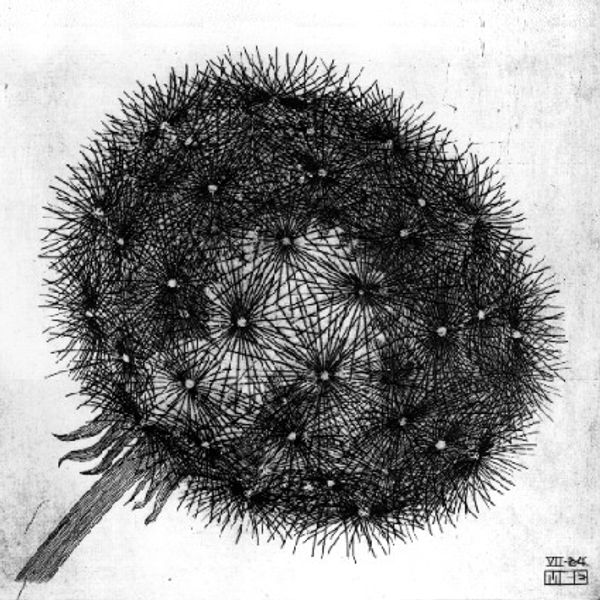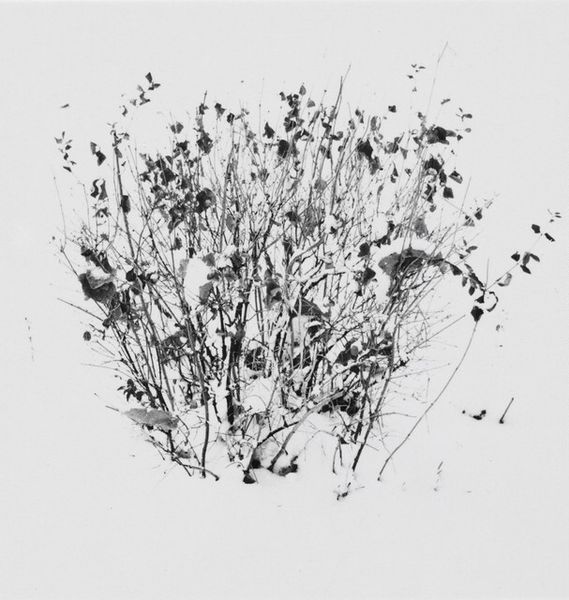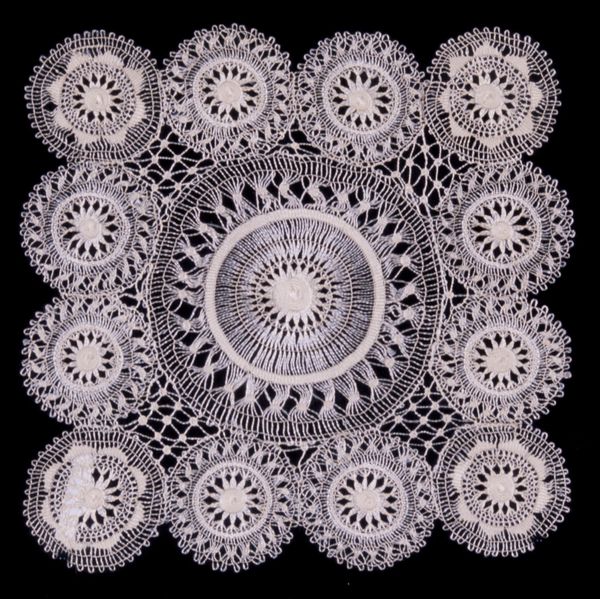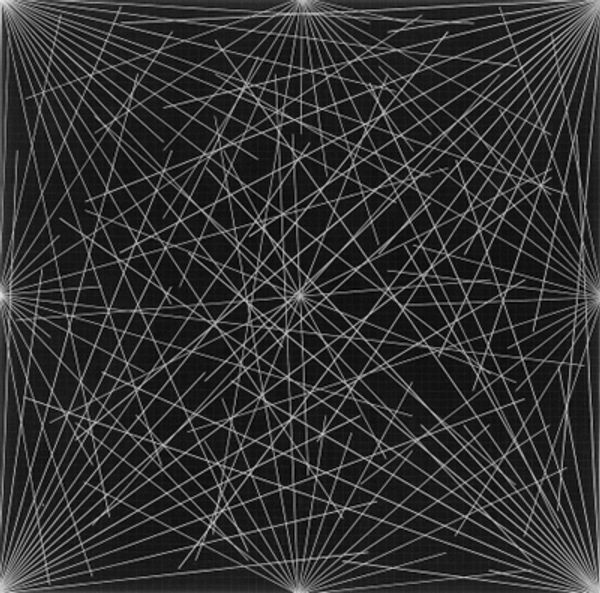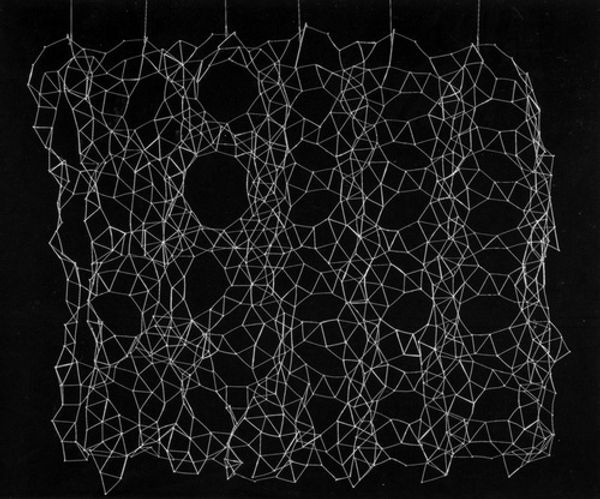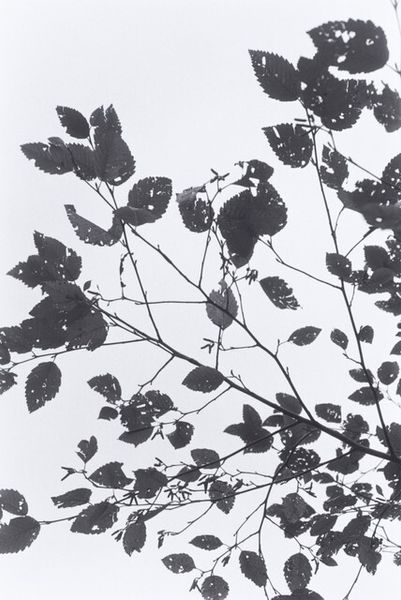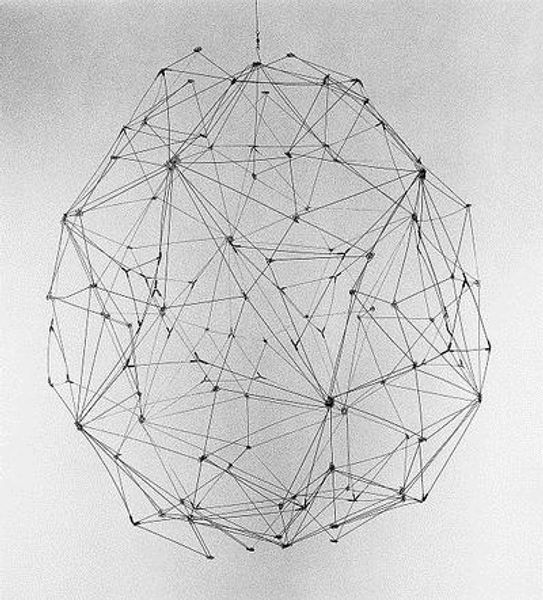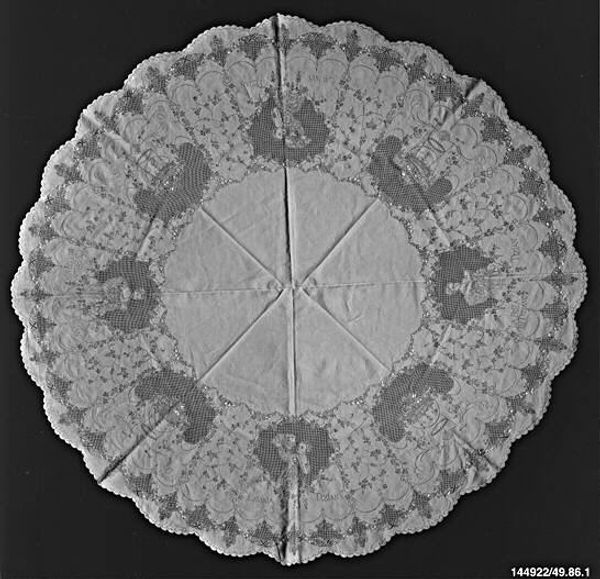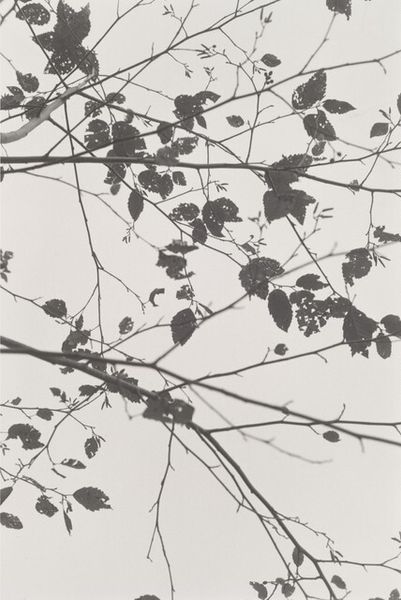
photography
#
still-life
#
still-life-photography
#
photography
#
geometric
#
abstraction
#
line
#
monochrome
Copyright: M.C. Escher,Fair Use
Curator: Look at this interesting photograph; it's M.C. Escher's "Blowball II" from 1943. The monochrome work shows a close-up of a dandelion seedhead. Editor: My first thought is that it resembles an exploded star, almost like something from an astronomical chart. The lines are so stark against the black background; it’s quite dramatic. Curator: I'm struck by the method; Escher used photography here instead of his better known graphic arts techniques. Photography, a product of technological advancement, provides a contrasting perspective in viewing an organic subject. I see the hand in the selection of the specimen and framing, and how that human choice guides the technical apparatus. Editor: Interesting point. For me, it's fascinating how the humble dandelion takes on almost cosmic significance. The seeds, each attached to its delicate parachute, speak to themes of dispersal, fragility, and the life cycle. Blowballs are connected to childhood memories. We used to blow on them and make a wish. Curator: And did you ever consider the labour involved in photographing it so? I wonder about Escher's access to resources and tools during the 1940s and the cost associated with that work. There is labour both visible and obscured in plain sight. Editor: True, these associations contribute to its resonance. Visually, it references the structure of mandalas, echoing ideas of wholeness and unity. It creates order from natural chaos by organizing nature. Curator: What I love about considering this work is that on one hand you have geometry, an understanding of the mechanical principles needed to harness photographic means, versus, what? Editor: An organic, very delicate, and, yes, ephemeral thing transformed into something almost architectural and everlasting! It feels like he is showing the dance between decay and infinity. Curator: Perhaps examining the processes behind artistic production deepens our understanding of how this interplay between human intention and the natural world manifests. Editor: Indeed. Escher presents something ubiquitous in a way that urges reflection on something seemingly insignificant.
Comments
No comments
Be the first to comment and join the conversation on the ultimate creative platform.
